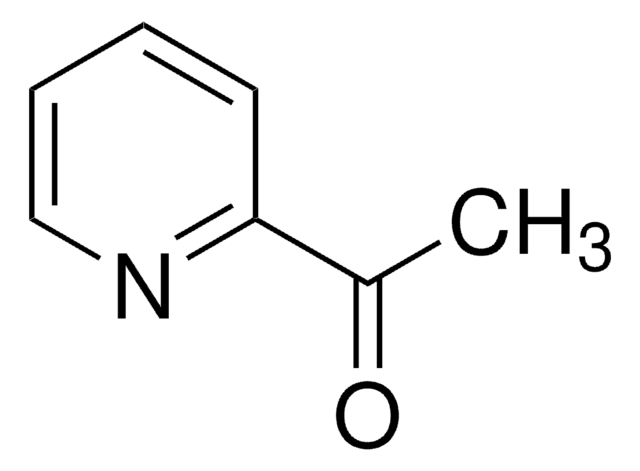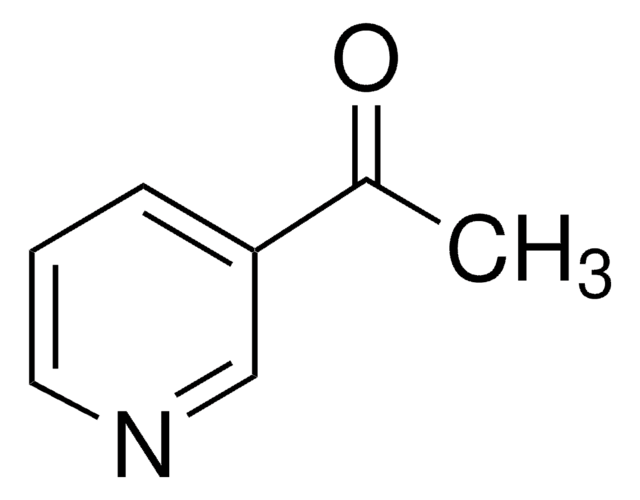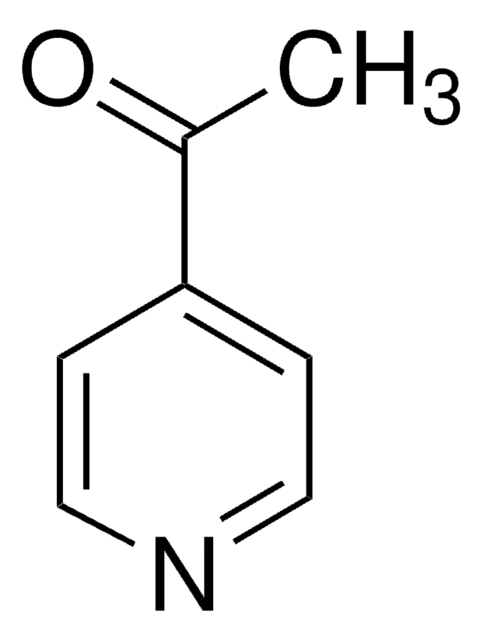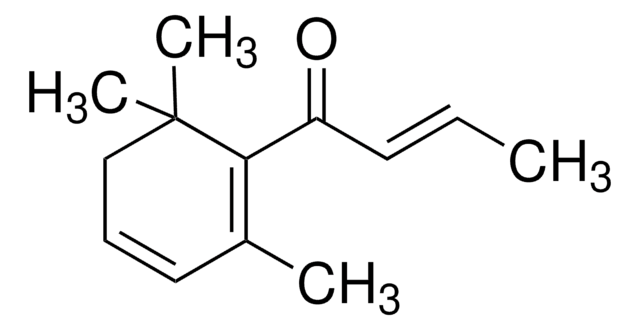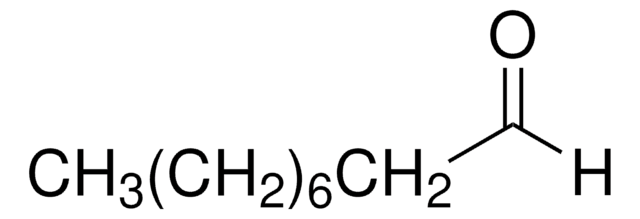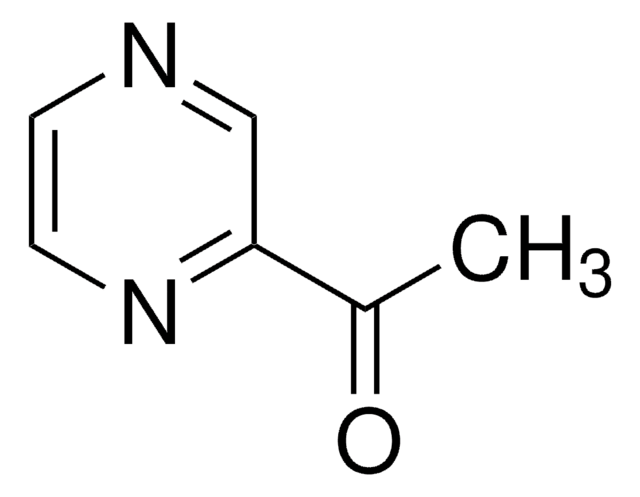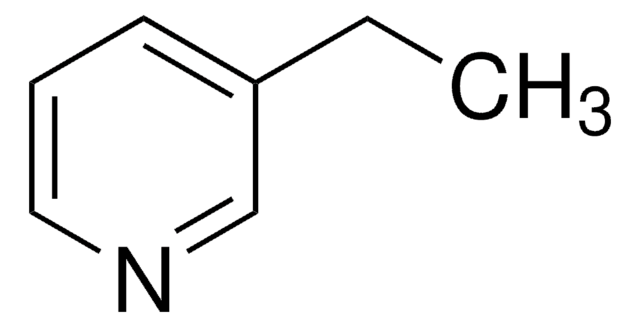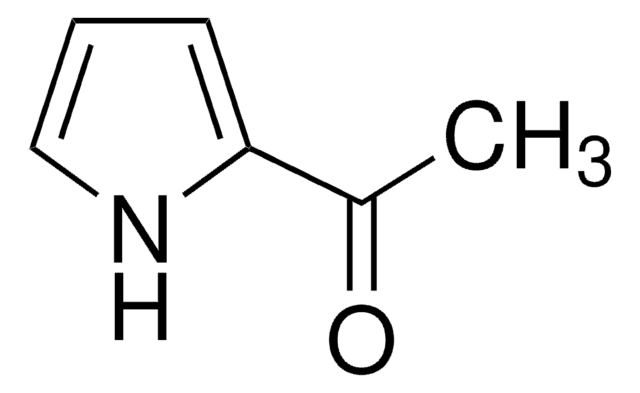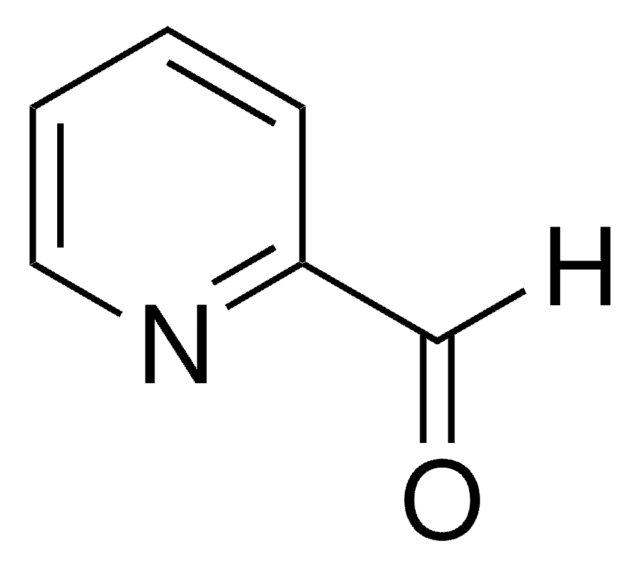W342408
3-Acetylpyridine
≥98%, FG
Sinonimo/i:
Methyl 3-pyridyl ketone
About This Item
Prodotti consigliati
Origine biologica
synthetic
Livello qualitativo
Grado
FG
Fragrance grade
Halal
Kosher
agenzia
follows IFRA guidelines
meets purity specifications of JECFA
Conformità normativa
EU Regulation 1223/2009
EU Regulation 1334/2008 & 178/2002
Saggio
≥98%
Impurezze
≤0.5% Water (Karl Fischer)
Indice di rifrazione
n20/D 1.534 (lit.)
P. ebollizione
220 °C (lit.)
Punto di fusione
11-13 °C (lit.)
Densità
1.102 g/mL at 25 °C (lit.)
applicazioni
flavors and fragrances
Documentazione
see Safety & Documentation for available documents
Allergene alimentare
no known allergens
Allergene in fragranze
no known allergens
Organolettico
nutty; sweet
Stringa SMILE
CC(=O)c1cccnc1
InChI
1S/C7H7NO/c1-6(9)7-3-2-4-8-5-7/h2-5H,1H3
WEGYGNROSJDEIW-UHFFFAOYSA-N
Cerchi prodotti simili? Visita Guida al confronto tra prodotti
Categorie correlate
Applicazioni
- Identification of antioxidant and flavour marker compounds in Kalosi-Enrekang Arabica brewed coffee processed using different postharvest treatment methods.: This study explores the impact of various postharvest processes on the antioxidant properties and flavor profile of Kalosi-Enrekang Arabica coffee, with a focus on 3-acetylpyridine as a key flavor marker. The research aims to enhance coffee quality and consumer satisfaction through optimized processing techniques (Yulianti et al., 2024).
Avvertenze
Danger
Indicazioni di pericolo
Consigli di prudenza
Classi di pericolo
Acute Tox. 3 Oral - Skin Irrit. 2
Codice della classe di stoccaggio
6.1C - Combustible acute toxic Cat.3 / toxic compounds or compounds which causing chronic effects
Classe di pericolosità dell'acqua (WGK)
WGK 1
Punto d’infiammabilità (°F)
219.2 °F - closed cup
Punto d’infiammabilità (°C)
104 °C - closed cup
Dispositivi di protezione individuale
Eyeshields, Faceshields, Gloves, type ABEK (EN14387) respirator filter
Scegli una delle versioni più recenti:
Possiedi già questo prodotto?
I documenti relativi ai prodotti acquistati recentemente sono disponibili nell’Archivio dei documenti.
I clienti hanno visto anche
Il team dei nostri ricercatori vanta grande esperienza in tutte le aree della ricerca quali Life Science, scienza dei materiali, sintesi chimica, cromatografia, discipline analitiche, ecc..
Contatta l'Assistenza Tecnica.